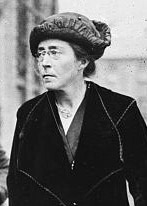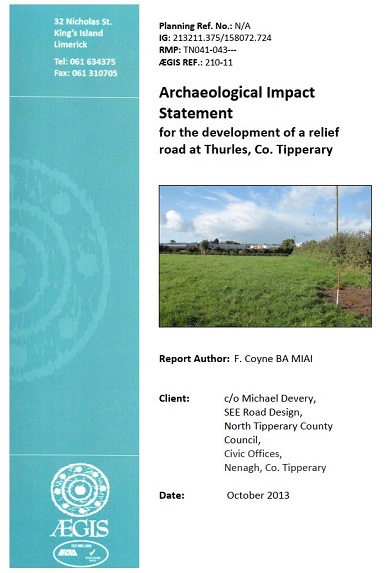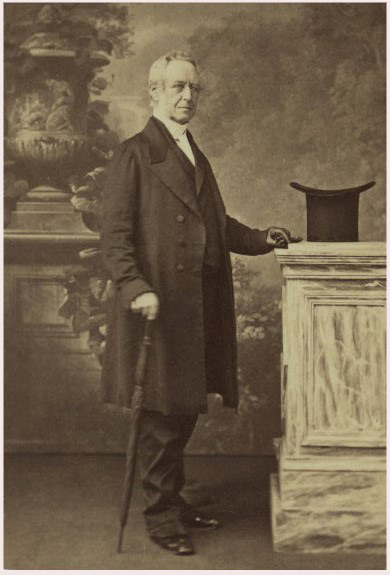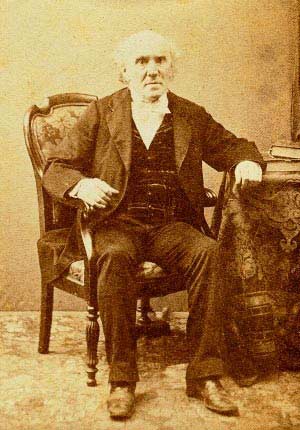Hannah Sheehy Skeffington – Loughmore Mill, Loughmore, Templemore, Thurles, Co. Tipperary.
A State commemoration ceremony for Francis Sheehy Skeffington and journalists Thomas Dickson and Patrick McIntyre, all who were executed together in Portobello Barracks (today known as Cathal Brugha Barracks), in Rathmines, Dublin, was held recently on the 26th April of this year.
It is however possibly less well known that Hanna Sheehy (1877-1946 & wife of Francis Sheehy Skeffington) lived and received her early education at Loughmore, Thurles, Co. Tipperary, at the end of the 19th century. This historic occurrence, today, closely connects the now presently inactive Loughmore Corn and Wool Tucking Mill, with this same unfortunate April 26th 1916 event.

Pictured L-R: (A) (L-R) Msgr. Dr. Maurice Dooley, with mill proprietors Tom, Geraldine & Tomás Larkin. (B) Existing partial interior of Sheehy’s original Mill, soon to be restored. (C) Hanna Sheehy’s original residence, as seen today.
About 1878 David Sheehy (Hanna Sheehy’s father), his wife Bessie (née McCoy), and their eldest child Hanna, came to live; renting the Mill in Loughmore. David was born in County Limerick and attended the Irish College, studying for the priesthood, in Paris with his older brother, Eugene,[*1] latter known as the ‘Land League Priest‘ and also one of Éamon de Valera’s teachers. However he (David), was sent home from Paris during an outbreak of cholera, there in 1866. On his return home he became implicated in the ill-fated Rising of 1867, after which he fled the country going to sea. After a few years he returned home and ran a mill at Kilmallock and later at Kanturk, before renting the mill at Loughmore around 1878. It was while in Kanturk that he married Bessie McCoy,[*2] who was from the region of Ballyhahill, in Co. Limerick.
[*1] In 1886 Fr Eugene Sheehy was C.C. of Kilmallock, Co. Limerick and later P.P. of Bruff. He resigned in 1909 because he had gotten into trouble with his bishop, Dr Edward Thomas O’Dwyer. He went to live with the Sheehy’s who were then living in Dublin. He was jailed in Kilmainham with Charles Stewart Parnell. He died in 1917 and is buried in Glasnevin cemetery.
[*2] Bessie’s sister Kate was Mrs Kate Barry of Barry’s Hotel, Dublin.
David and Bessie went on to have seven children, six of whom were born in the village of Loughmore, Thurles, Co Tipperary. Before the end of the century the whole family had moved to No 2. Belvedere Place, Dublin. David became Secretary to the Irish Parliamentary Party and an M.P. for Meath and later for South Galway; a post he held until the Sinn Féin landslide of 1913. James Joyce, a student at the nearby Belvedere College was a regular visitor to No 2. Belvedere Place, in 1896-1897 and he nursed a secret love for Hanna’s sister Mary, who was later married to Irish economist, journalist, barrister, writer, poet, soldier and Home Rule politician Tom Michael Kettle. Bessie died in 1917 and David around 1932/33, at the age of 86.
Before moving to Loughmore, his eldest daughter Hanna Sheehy had been born 3 years earlier in Kanturk, North Co. Cork, on the 24th May 1877.
The text hereunder is reproduced from an old newspaper clipping from the year 1938.
A Village in Tipperary
[“Reminiscences of her childhood in Loughmore” – by Hannah Sheehy Skeffington (1877-1946)].1916 picture of Hanna Sheehy.
“It lay nearly half-way between Templemore and Thurles in Co. Tipperary, with the Devil’s Bit for a background. I made its acquaintance at the age of three, and lived there in the old Mill till I was ten. I can wish nothing better for any child than to be born and brought up in the country – you miss a lot your whole life long if you have not had such a start.
The railway line from Kingsbridge to the South lay midway between the Mill and the Village, and right at the top of the latter were clustered church, graveyard and school. One of my earliest recollections is listening to the Rooks, cawing from the high tree tops in the graveyard from the open door of the national school as we conned our “tasks” in the big room, our one schoolroom for the girls and younger boys, with a class at each corner and one often in the middle as well. Outside in that same graveyard stands the monument to the Cormack brothers, wrongfully hanged in penal times, whose name was cleared and bodies buried there later.
The Mill was pure romance – the mill race fed from the Suir, the house and kitchen garden, outhouses and grove at the back being practically on an island. Our outer gate closed at night like a fortress shutting us in. The bakehouse was across the yard – the smell of new-made bread is another childhood memory, and the sight of the huge batches shoved into the gaping oven: if you were good, the baker let you knead some dough for a little loaf of your own. And the sound of the doves cooing around the corn and all the wonders of the loft, the granary, the revolving wheel, the sound of running water – water all around, so that we were sometimes caught by flood and marooned – all these made a wonderful childhood setting, and what playgrounds did they offer! Years later, when I revisited the place, I was amazed to find how everything seemed to have shrunk to much smaller dimensions. To childhood’s eyes distances are vast.
Outside the gate we swung an arch (how laboriously made, how elaborately festooned, ivy and boughs of flowering shrubs, slung on a rope) to welcome Archbishop Croke, come for Visitation, to the parish – the first after his return from Rome with his immortal “Unchanged and unchangeable” [*3]. On one side we painted on canvas the phrase (we did not grasp its full meaning then, we just knew it was “a famous victory”) aided by the mill-boys. On the other side we put the word “Wealcome” – it is to the credit of our elders that they left as it was written, for the whole was a spontaneous offering, spelling and all! and the Archbishop’s keen grey-blue eyes twinkled as he passed and caught sight of it.”
[*3] Archbishop Thomas Croke had been summoned to Rome by Pope Leo XIII and Cardinal Simeoni. He had been recalled to answer questions regarding his continued support of Charles Stewart Parnell. Following his meeting and prior to his return he stayed at the Irish College in Rome and when questioned regarding the outcome of his meeting with both men, Archbishop Croke had stated that he returned to Ireland “Unchanged and unchangeable.”
“For we had a highly political atmosphere, a beloved uncle being in jail, first in Naas, then in Kilmainham, during part of that time, one of the “Suspects” – did he not send us sweets from each place? We played at evictions and had to conscript Emergency-men from the boys of the village (naturally everybody wanted to be evicted tenants) while we fortified our holdings in the hen-house and hay barn, yelling Fanny Parnell’s “Hold the Harvest”! We hummed derisively “The Peeler and the Goat” as the sleek sergeant passed the gate in the evening, and when a grabber seized a holding in the parish, we took our part in the boycott with the vim of youth for any fray.
Literary memories of a staider kind were the reading aloud at the family circle of Knocknagow, and the equally thrilling (not so public) perusal of Jane Eyre, high in the branches of a cherry-tree across the stream. Grandmother told us stories of the Famine as bed-time yarns, or of O’Connell, whom she knew in her youth – the grandparents revered him, but we sided with our parents, who, loving the Fenians, had no use for Dan. Purcell’s Castle was hard by, with its ruins of other days and its fearsome dungeons that we loved to explore.
In school I learned “the rudiments of Arithmetic”, the chief towns of Ireland (both have stayed with me) and not much else. Oh, yes, a number of most complicated games that we played in the lunch interval in the school yard – I can now only remember one called “Hell and Heaven” like “Oranges and Lemons.” And, of course, “Tig” and “Rounders”. The rest of our education was outside the school. We knew where the first primrose and violet could be gathered, and where the richer land for cowslip and and mushroom lay; we made balls of the former, and mother made ketchup such as one may never taste now. The early lambs, the speckled trout in the stream, the blackbird’s nest in the wall cranny by the lilac-tree, left undisturbed of course; the larks in the far meadow; the fairies in the fort; the Seanachie at Gleeson’s or Dea’s or Hennessy’s, where the young people gathered with the old, around the big fire and watched the old grandmother spin while the tales were told – of highway men, of men on their keeping, of cruel landlords, and how vengeance surely, slowly tracked them down, of ghosts and headless horsemen, of Banshees … I hope our folk-lore archives have got some of them.
The mill-wheel turns no more, but the ‘Suir’ flows by majestically as of yore, and the Devil’s Bit looks down benignly on old Loughmore.” END
In 1903 Hanna was married in University Church, Dublin to Francis Skeffington, who was son of Dr Joseph Skeffington. Dr Joseph was an Ulsterman, a Catholic and an Inspector of Schools. His son Francis (Hanna’s husband) was a pacifist and a journalist. Born in Baileborough, Co. Cavan, in 1878, he was educated at U.C.D., gaining an M.A. from the Royal College. He edited “The Nationalist”, “The National Democrat” and “The Irish Citizen”; published the life of Michael Davitt in 1903 and, posthumously, a novel “In Dark and Evil Days”, with portrait and memoirs.
Francis Sheehy-Skeffington was executed in Portobello Barracks, Dublin, by a firing squad under the command of Captain J. C. Bowen-Colthurst, Royal Irish Rifles, on Wednesday 26th of April 1916, during the Easter Week Rebellion, at the age of 37 years.
The video, hereunder, tells of the historical tale and trail of events, as they happened, 100 years ago in April 1916.

Hanna on her release from jail in 1913, with her husband Francis (right) and uncle Fr Eugene Sheehy (left).
Despite being only 5 ft. 2in. in stature, Hanna Sheehy Skeffington got into numerous scuffles with the law. She was jailed in 1912 for breaking the windows of government buildings (Broke windows and fixtures in the GPO, Dublin Castle and the Custom House) in support of Irish Suffrage, as part of an Irish Women’s Franchise League (IWFL) campaign. That same year she also threw a hatchet at visiting British Prime Minister Herbert Asquith. She lost her teaching job in 1913, when she was arrested and imprisoned for three months after throwing stones at Dublin Castle and assaulting a police officer in another feminist action. She was visited in jail by Anna Haslam, founder of the Dublin Women’s Suffrage Association. While in jail she went on hunger strike and was released under the Prisoner’s Temporary Discharge of Ill Health Act, but was soon to be rearrested.
Francis Skeffington and Hanna had both given up the practice of their religion prior to their only offspring; a son Owen,[*4] being born in 1909.
[*4] Owen Sheehy Skeffington was brought up a ‘Free-Thinker’. He was Professor of French Language and Literature at T.C.D. He was a socialist in political outlook and was a member of the Labour Party up to 1940, when he was expelled for his views. He was elected to the Senate in 1954, a post which he held until his death on June 7th 1970, aged 61.
Other Children of David Sheehy Born in Loughmore, Thurles, Co. Tipperary
Margaret Mary Sheehy was born in Loughmore on 31st January 1879. She died in infancy.
Margaret Mary Sheehy, (Customary at that time to name the next offspring after a previous infants death) baptised in Loughmore on 11th January 1880. She was to marry twice; first to Frank Culhane in Co. Limerick, by whom she had 4 children, two of whom took Religious Orders. Secondly to Mr O’Casey by whom she had another son Michael. She died in 1956.
Richard Joseph Sheehy, baptised in Loughmore on 2nd January 1882. He became Professor of law at U.C.C. He married Cáit Sheehy, from County Limerick. He contracted T.B. and died after nine years of illness, about 1924. They had one daughter, Frances.
Eugene Sheehy baptised in Loughmore on 31st March 1883. He was a barrister and became Circuit Court Judge in the West of Ireland. He wrote the book “May it Please the Court”. He was a Redmondite Volunteer and served in France during the 1914-18 war. He married Carmel Neary and they had two children, one of whom became a Sacred Heart Nun in Tokyo and the other, David, a barrister in Dublin. Eugene died in 1950.
Mary Sheehy was baptised in Loughmore on 30th October 1834. As already stated, she married Tom Kettle, latter was born in Co. Dublin in 1830. He was educated at Clongowes and U.C.D., and was M.P. for East Tyrone from 1910-14. He was a Redmondite Volunteer in the British Army in 1914 and was killed at the Battle of the Somme. They had one daughter, Betty, who became a solicitor. A memorial bust by F.W. Doyle-Jones to Thomas Kettle, to be found in St. Stephen’s Green, in Dublin, bears an extract from Kettle’s own poem:
To My Daughter Betty, The Gift of God.
“Died not for flag, nor King, nor Emperor,
But for a dream born in a herdsman’s shed,
And for the secret scripture of the poor.”
Kathleen Sheehy was baptised in Loughmore on 1st May 1886. She married Francis Cruise O’Brien, an agnostic, in 1912. They had one son, Conor Cruise O’Brien,[*5] the writer and political commentator, who at one time was Minister for Posts and Telegraphs. Kathleen was a gold medallist in Irish in Junior Grade in 1901. She got her B.A. in modern literature in 1908 and her Masters degree also. She taught Irish in Rathmines and wrote some books in Irish and English. She adapted Gregg Shorthand [*6] for Irish. She died in 1938.
[*5] Conor Cruise O’Brien (Nov 3rd 1917 – Dec 18th 2008) nicknamed “The Cruiser”, was an Irish politician, writer, historian and academic and was elected to Ireland’s parliament as a Labour Party TD (1969 general election) for Dublin North–East, becoming a Minister from 1973 – 1977. His opinion on the role of Britain in Ireland and in Northern Ireland changed during the 1970’s following the outbreak of ‘the Troubles’ after 1968; observing Nationalist and Unionist traditions as being irreconcilable. He opposed the African National Congress’s academic boycott of the apartheid regime in South Africa, and during his career as a civil servant he worked on the government’s anti-partition campaign. He was also the Labour Party’s Northern Ireland spokesman during those years, while later becoming an author and a columnist for the Irish Independent newspaper.
[*6] Gregg shorthand is a form of pen stenography, invented by John Robert Gregg in 1888. It is based on elliptical figures and lines that bisect them.
An anti-treaty IRA supporter, during the 1930’s, Hanna was the assistant editor of the Sinn Féin newspaper, ‘An Phoblacht’. In January 1933 she was arrested in Newry for breaching an exclusion order which had banned her from Northern Ireland. At her trial she stated: “I recognize no partition. I recognize it as no crime to be in my own country. I would be ashamed of my own name and my murdered husband’s name if I did… Long live the Republic!”. On that occasion Hanna was sentenced to one month’s imprisonment.
Hanna Sheehy Skeffington was also a founding member of the Irish Women Workers’ Union, (today subsumed into SIPTU).
Hanna died, aged 68, in Dublin and is buried with her husband Francis in Glasnevin Cemetery.
One is reminded of the quote by Thomas Davis “Where Tipperary leads, Ireland follows.”
Historical Research: Monsignor Dr. Maurice Dooley, Loughmore, Templemore, Thurles, Co. Tipperary.





